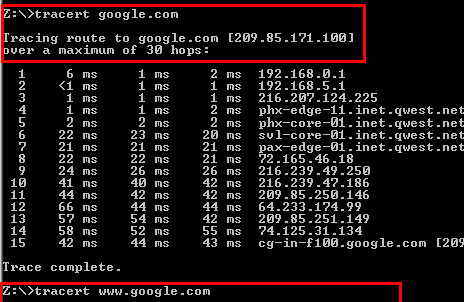Q: what is an IP address?
A: An IP address (Internet Protocol address) is a unique numerical label assigned to a device. It provides the location of the device in a network and a route on how to get there. The internet uses an IP address. Wireshark is a network protocol analyzer, and is the standard in many industries. It is the continuation of a project that started in 1998. Hundreds of developers around the world have contributed to it, and it is still under active development. Read or write many different capture file formats: tcpdump (libpcap), Catapult DCT2000, Cisco Secure IDS iplog, Microsoft Network Monitor, NAI Sniffer. Dualhome.iptrace (AIX iptrace) Shows Ethernet and Token Ring packets captured in the same file. Dvmrp-conv.cap Shows Distance Vector Multicast Routing Protocol packets. Eapol-mka.pcap (libpcap) EAPoL-MKA (MKA, IEEE 802.1X) traffic. Epmd.pcap Two Erlang Port Mapper Daemon messages. EthernetPauseFrame.cap Ethernet Pause Frame packets. Visualize in Google Maps the complete route of an IP packet to any host. Quick, remote visual traceroute online tool that helps you track down any delay in your network.

A: An IP address (Internet Protocol address) is a unique numerical label assigned to a device. It provides the location of the device in a network and a route on how to get there. The internet uses an IP address to send IP packets from a source to a destination. It is a building block that lets the internet function.
Q: can an IP address identify me?

Q: can I track someones IP-address ?
A: No, you can’t just track an Ip-address. You first need to have received one. Compare it to receiving a letter. If you receive the letter, then you can figure out where the letter came from by looking at the return address. If you don’t have the letter, then you also won’t have a return address. By the same token, if a letter does not have a destination address, you will not get a letter, and there is nothing to track it back to.
In internet terms this means you need a source address, a destination address and traffic (an email or a browser action) between the two. Normally an online business has a site or app as the destination and someone surfing the web is the source. If you are a business that has a site or an app and you are receiving internet traffic to the site or app the you will be able to see the ip-addresses coming to your site or app. Other places you can also see ip addresses are in the headers of the emails you receive or the log files of routers.
Q: how does an IP tracker work?
A: Opentracker records each unique user and their IP address. We use an IP tracer to identify where an IP address (and the visitor behind it) originates from.
Do you need to find a specific user or visitor?
Your business can locate any user or unique visitor who has been on your website by IP address.
Go back through your historical data to see entire visit or session history of any IP address.
Q: can I tag IP addresses?
Yes, Opentracker allows businesses to automatically or manually tag any ip address for future reference, or processing to other destinations.
Q: can I investigating click-fraud?
Iptrace For Linux

Yes, detect Click-fraud and provide proof where needed.
Q: can I following up on a leads?
Yes, search visitors & clickstreams by IP address – make a record, enter into SalesForce, or any other CRM. Know what your (potential) clients are thinking, and what they are interested in. See how often a potential leads or clients returns, along with their entire history of clicks, downloads, events, and activity.
Profit from invaluable strategic insights. Improve your funnels.
Identify multiple customers behind a single IP address
Our first-party cookie tracking technology allows us to identify multiple customers in the same company or organization located behind the same IP address / firewall. See when your product or service offerings are passed on for consideration or discussion within an organization.
Details about an IP address include:
Ip Tracert
- Referrer, Exit, search term
- Browser name & Version
- Platform & Devices
- Country, Region, City
- GPS Longitude & Latitude
- Timezone & Language
- ISP, Provider or Carrier
- Company & Organization
- Area, Postal or ZIP code
- IP address & Connection type
- Display size & Orientation
